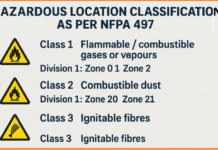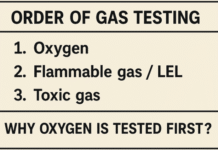The Systematic Cause Analysis Technique (SCAT) is a structured approach used to investigate accidents and incidents in workplaces. Its primary goal is to identify all contributing causes – especially the root causes – so that organizations can implement effective solutions and reduce the likelihood of similar incidents happening again.
SCAT provides a clear and logical process that helps teams go beyond surface-level explanations and dig deeper into the systems and conditions that contribute to accidents. This method supports organizations in creating safer and more reliable work environments.
Steps in the SCAT Process
1. Describe the Incident
The process begins with a thorough description of the event. This includes gathering detailed facts about what occurred, who was involved, what equipment was in use, and the environmental conditions at the time. Interviews, photographs, and documentation all contribute to building an accurate picture of the incident.
2. Identify Direct Causes
These are the immediate events or conditions that led directly to the incident. Examples include equipment failure, human error, or a hazardous work environment. Direct causes are often the most visible, but they rarely tell the full story.
3. Identify Indirect Causes
Indirect causes are contributing factors that set the stage for the direct causes. These may include unsafe work practices, lack of training, poor maintenance, or unclear procedures. Identifying these helps in understanding how the incident unfolded over time.
4. Identify Root Causes
At this stage, investigators look for deeper organizational or system-level problems that allowed the indirect and direct causes to exist. Tools such as the “5 Whys” method or a Fishbone Diagram are commonly used. These root causes might relate to company culture, ineffective policies, or gaps in leadership oversight.
5. Develop Corrective Actions
Once the root causes are clear, the next step is to design corrective actions. These actions should not only address the immediate issues but also target the underlying problems. Solutions may involve revising procedures, improving training, updating equipment, or changing workflows.
6. Implement and Monitor
Corrective actions need to be implemented effectively, with clear roles, timelines, and resources. Follow-up is critical to ensure that changes are working as intended and that new risks are not introduced. Monitoring progress also provides opportunities for continuous improvement.
Applications of SCAT
Incident Investigation
SCAT is widely used to conduct detailed investigations of workplace accidents. By uncovering all contributing causes, organizations can take meaningful steps to prevent future occurrences.
Continual Improvement
SCAT supports ongoing efforts to strengthen safety systems. Insights gained from each analysis contribute to better policies, safer equipment, and more effective training programs.
Risk Management
Beyond reacting to incidents, SCAT helps organizations proactively identify weaknesses in their processes and mitigate potential hazards before they lead to harm.
SCAT is a valuable method for improving workplace safety through a clear, systematic approach. By focusing not just on what happened, but why it happened, organizations are better equipped to build safer environments and stronger safety cultures.





